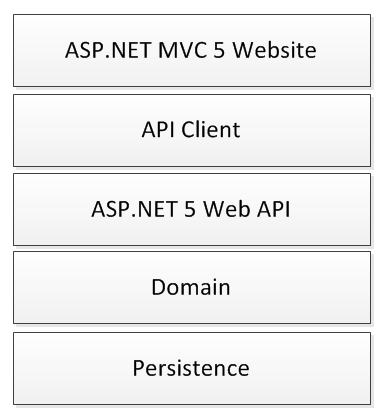A Simple 3 Layer Architecture
A while ago I talked about the standard architectural approach at work. The truth is I'm not completely taken with putting an API in, particularly when its a small application. So how would an application look without the API? Well, I know all of the patterns, but I haven't actually put them together and had a poke around and understood the whys and wherefores of each design decision, so I thought I would give it a try...
I read through the following resource online, and also referred back to Patterns of Enterprise Application Architecture and Architecting Applications for the Enterprise as well as chatting with some of my colleagues at work to further my understanding.
- Testability and Entity Framework 4.0
- Implementing the Repository and Unit of Work Patterns in an ASP.NET MVC Application
- Repositories On Top UnitOfWork Are Not a Good Idea
- Favor query objects over repositories
- Advantage of creating a generic repository vs. specific repository for each object?
Business Logic Layer
My domain project fulfills the role of the business logic layer. The main change I have made from the standard architecture is to swap out the Web API project for a set of service classes. For now the domain will be implemented in a procedural fashion in these classes, but as the complexity of the application grows I will review this decision.
Domain Objects
I decided to use my persistence objects or entities as my domain objects as a bit of a short cut. In theory the three layers would be completely isolated, and as such would have objects that they operate on to perform their various functions - Entities/DTOs/Models. I will be using model objects in the website, but the entities which are persisted to the database are the same objects that the BLL will use to perform business functions.
Persistence
The persistence layer makes use of some well known patterns. I saw some interesting debates around whats considered good and/or bad with layers and patterns. I decided to use the following patterns, in the following ways, for the started reasons.


